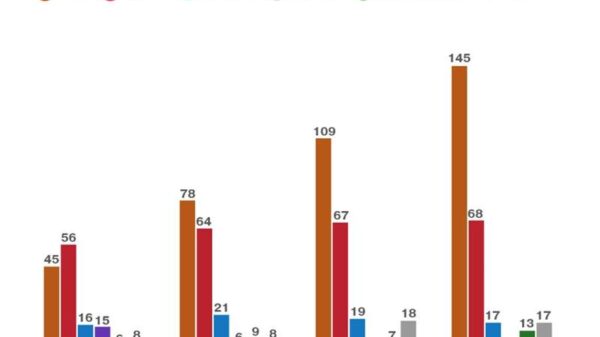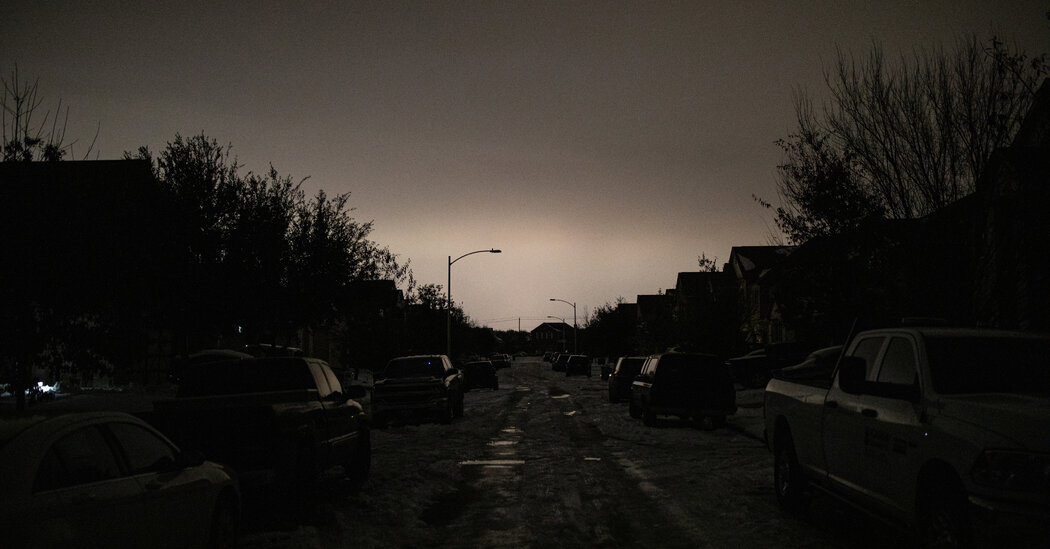A year ago, Texas found itself in the dark when a winter storm knocked power plants throughout the state off line.
One of the most obvious fixes would be for Texas to put aside its parochialism and fear of federal oversight and connect its grid with the rest of the country. Not only would this have eased the crisis last February; it could improve reliability for the rest of the country, save consumers money nationwide and accelerate the transition to clean energy in the power sector.
But Texas’ hidebound go-it-alone attitude could leave Texas isolated and shivering — or sweltering — when the next energy disaster strikes.
The state’s deregulation of its electricity network increased competition and accelerated the deployment of renewables but also squeezed money that providers had to spend on maintenance and winterization. This left the system, which was designed for summer reliability, unprepared for the frigid winter storm last year.
But the problem was compounded by the fact that about 90 percent of Texans are served by a grid, known as ERCOT (the Electric Reliability Council of Texas), that is almost completely isolated from the two grids that cover virtually the rest of the contiguous United States — the Eastern and Western Interconnections. Because of that, Texas could not really rely on other states for electricity during last year’s crisis.
That’s a major reason Texas, the state with the most energy in the country, suffered a catastrophic energy shortage for the second time in a decade. Freezing conditions afflicted gas wells, nuclear facilities, coal plants, roads, wind turbines and much of the state’s energy infrastructure. More than 10 million Texans lost power, hundreds of people died, and the total cost to the Texas economy may surpass $100 billion.
At the depth of the crisis, more than half of ERCOT’s winter generating capacity was unavailable because equipment failed or natural gas to power plants was cut off after gas wells and processing facilities froze, causing statewide gas production to fall almost in half. In a situation like that, it would be good to be in a position to get help from neighbors. (El Paso, which invested in the winterization of its equipment and is not part of ERCOT but is connected to the western grid, survived the crisis much better, even though the temperature dipped at one point to 14 degrees. But because it is not connected to ERCOT, it couldn’t help out its Texas neighbors.)
Had Texas been connected to the eastern or western grid or both last year, it is likely there still would have been some rolling blackouts but not the sustained multiple-day power outages that hit some areas. That interconnection could help prop up Texas when power is scarce, and Texas could do the same for other states in return.
Interconnection would also help accelerate the transition to cleaner forms of energy. Texas is blessed with an abundance of cheap, flat, sunny and windy land and a business climate that makes it easy to build low-cost, large-scale wind and solar power plants. As of last month, there was more than 120,000 megawatts of wind and solar generating capacity in some stage of planning and development for possible deployment in ERCOT.
But in 2020, ERCOT already had more than 100,000 megawatts of installed electricity-generating capacity — of which about a third was wind and solar. Peak demand for electricity in Texas on a hot summer afternoon or cold winter morning is about 75,000 megawatts. That means that for much of the year, Texas wind and solar developers could have excess power to sell to other states that want clean power for their ongoing needs or to operate flexible industrial demands. They could find those markets (California comes to mind) if Texas were connected to the national grid.
I’ve calculated that clean energy flowing from parts of Texas could help retire coal and natural gas plants elsewhere in the state and in other states, reducing annual carbon dioxide emissions by 100 million tons or more. And ERCOT’s total planned development, if realized, could unleash a wave of investment and innovation from entrepreneurs, project developers and venture firms like the one I work at that could result, by my calculations, in some $10 billion in new electricity sales annually. Much of that revenue would flow to rural communities, boosting local wages.
Texans could sell clean renewable power for a profit while helping other states decarbonize and improving reliability for the next big storm.
The nonprofit Americans for a Clean Energy Grid found that expanding interconnections in the eastern grid would provide distinct environmental and economic benefits. The U.S. Department of Energy’s National Renewable Energy Laboratory led a similar analysis affirming this point but scaled up nationally, concluding that encouraging interconnections between the grids by improving transfer capacity could yield substantial economic, environmental and even reliability benefits.
A modernized and extensive network would give us more options for power generation, letting the East Coast connect more easily to wind in the Great Plains and the West Coast to solar in the Southwest. It also would allow more reliability as storms roll through parts of the country. Putting the new transmission lines underground along existing rights of way would make the system robust against windstorms and prevent the sparking of destructive wildfires without destroying natural vistas.
There are networks for telecommunications, highways and pipelines that include Texas and span many states, so why not for electricity?
Texas leaders have said they are afraid of the federal regulators. Rick Perry, a former Texas governor and federal energy secretary, claimed that Texans would rather endure multiday blackouts than have federal regulators scrutinizing the state’s grid. Some of this goes back to the time decades ago when federal price controls on interstate natural gas markets made it less profitable for producers to extract natural gas. But deregulation liberated energy producers from those controls.
Texas already deals with federal regulators to export natural gas, gasoline, liquefied natural gas and crude oil. Why make an exception for electricity? This stubborn fear of federal regulators means the state will leave money on the table while risking another disaster.
That next severe winter storm will come whether we plan for it or not. There’s no reason to cower in the dark when we can instead be a good neighbor and make money by investing in a better future.
Michael E. Webber is a professor of energy resources at the University of Texas and the chief technology officer at the venture fund Energy Impact Partners.
The Times is committed to publishing a diversity of letters to the editor. We’d like to hear what you think about this or any of our articles. Here are some tips. And here’s our email: letters@nytimes.com.
Follow The New York Times Opinion section on Facebook, Twitter (@NYTopinion) and Instagram.


























